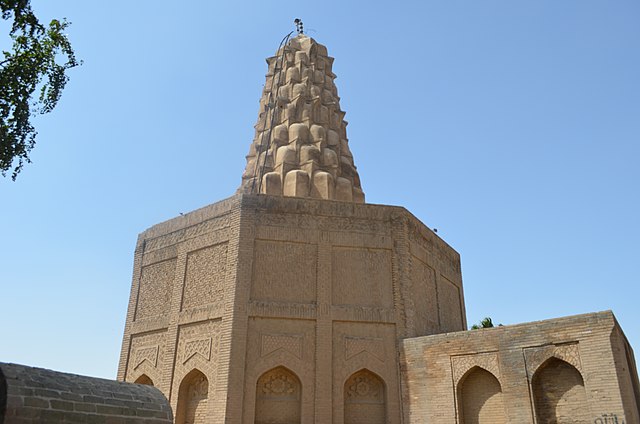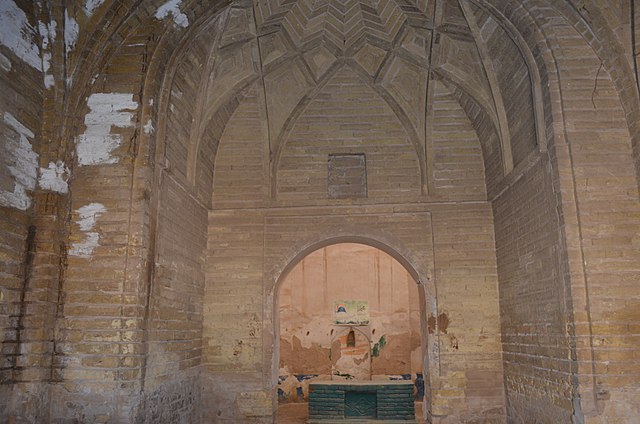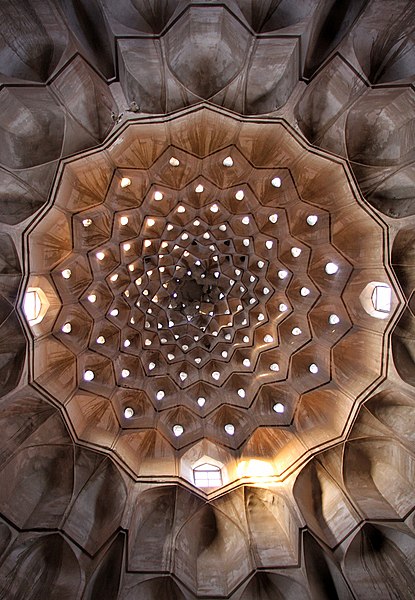Abū al-ʿAbbās Aḥmad ibn al-Hasan al-Mustaḍīʾ, better known by his laqab al-Nāṣir li-Dīn Allāh or simply as al-Nasir, was the Abbasid caliph in Baghdad from 1180 until his death. His laqab literally can mean The One who Gives Victory to the Religion of God. He continued the efforts of his grandfather al-Muqtafi in restoring the caliphate to its ancient dominant role and achieved a surprising amount of success as his army even conquered parts of Iran. According to the historian, Angelika Hartmann, al-Nasir was the last effective Abbasid caliph.
Possible depiction of Al-Nasir holding two dragons, which could be a symbol of his victory of his two major enemies: the Grand Master of the Assassins, and the Khwarizmian Empire ruler Muhammad II. Baghdad, Talisman Gate, built circa 1221-22.
al-Sarai Mosque was built by al-Nasir
Gold dinar of al-Nasir minted in 607 AH
A coin minted in the name of Muhammad II (1200–1220) of Khwarezm, citing caliph al-Nasir as nominal suzerain.
Zumurrud Khatun Mosque and Mausoleum
The Zumurrud Khatun Mosque and Mausoleum, also known as the Tomb of Sitta Zubayda, is a historic mosque and shrine located in Baghdad, Iraq. It dates back to the Abbasid era. It is located in Sheikh Ma'ruf Cemetery in the Karkh side of Baghdad, and the site was built at the patronage of Zumurrud Khatun and her son. Zumurrud Khatun was the wife of the 33rd Abbasid caliph, al-Mustadi and mother of Caliph al-Nasir. She collected the waqf money from madrasas and built her mausoleum before her death, which is located in Karkh.
Zumurrud Khatun Mosque and Mausoleum
Interior view of tomb layout.
Interior view of the tomb's muqarnas dome.
The muqarnas-filled dome seen from the inside








